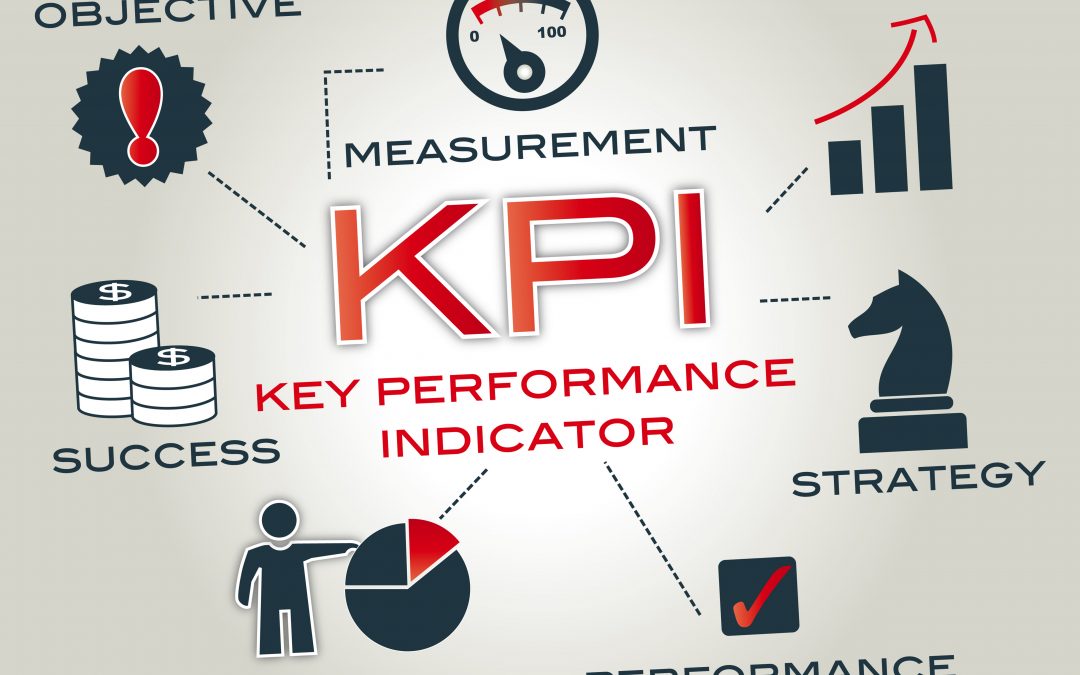Many years ago, I remember sitting in a meeting led by our team’s Senior Vice President where he was discussing his vision for our outbound sales department and the strategy that would help us reach this vision. As I listened to his presentation, I couldn’t help but feel inspired by the direction we were about to head. He shared his strategy on creating better lead lists and clearer approval guidelines and how we could focus our efforts to become as effective as possible.
He then turned to the whiteboard and wrote the letters K-P-I and started listing numbers. My mind stopped. I searched my memory to see if I could make sense of what these letters stood for but nothing came up. I turned to look at the others in the meeting to see if I could detect a hint of confusion in their faces, but each seemed to be doing a particularly good job of at least pretending to know what KPI stood for. Was I the only one who didn’t know? A quote popped into my head about it being better to remain silent… so I did for the rest of the meeting.
After the meeting I raced to my computer (this was before smart phones) and looked up KPI. There it was, Key Performance Indicators. “Hum” I thought. I had never heard of it. I read the definition quickly and closed the webpage just as our SVP stopped at my desk to say goodbye. Without skipping a beat I said, “Loved the presentation Brett, especially the discussion about Key Performance Indicators. I think having measurements to evaluate the success of our team is going to be powerful.”
He didn’t say anything, but his face told me he thought I was a bit loony.
A famous quote often attributed to Peter Drucker says, “If you can’t measure it, you can’t improve it.” This is true in many situations and especially for credit unions that are striving to move the organization’s sales performance forward. Unfortunately, credit unions are often confused about what to measure, what the measurements mean, and what to do with them.
There are a million and one ways to use data. It is easy to get lost in the information and make the assumption that everything must be measured. On the flip side, it is easy to try to oversimplify the information we have and miss critical information because we are not measuring enough. Additionally, what we measure largely depends on the perspective from which we look at the data.
The primary reason for developing and analyzing sales KPIs is to understand the effectiveness of the credit union’s sales program and the collective efforts of the sales team. They are also helpful in ensuring that the credit union is promoting balanced growth, a consistent challenge for many credit union leaders.
With the proper sales KPIs in place, credit union leaders can monitor the organizational performance, direct resources to various parts of the sales program, and address critical sales and operational training needs all the way down to the front line. This is why it’s important that the credit union track the right data and measure the correct results.
Here are the 8 Sales KPIs every credit union should be measuring.
#1 Net New Deposits:
This is a common measurement that most credit unions already track. However, they may be tracking it incorrectly.
When tracking net deposit growth, it is tempting to simply look at the total deposits line at the end of the month, but that does not tell the full story. For this measurement to be effective, credit unions need to track both the growth in new deposits and the loss of existing deposits. Why? There are two ways to improve deposit growth. First, bringing in new deposits by promoting savings and checking accounts will improve deposit growth. And second, providing better solutions to members will help prevent them from moving funds out of the credit union and thus maintain current deposits.
By monitoring both sides of the Net New Deposits KPI, leaders can support and promote a balanced growth strategy.
#2 Net New Checking Accounts:
Along the same lines as Net New Deposits, Net New Checking must also measure both new checking accounts being opened and the total checking accounts closed.
One major benefit of closely monitoring account closures is to develop proactive retention campaigns that help prevent checking accounts from leaving the credit union. By closely measuring checking account closures, credit union leaders can identify early indicators that signal a checking account is heading for closure and address them before it’s too late.
#3 Net New Credit Cards:
The last of the “Net” measurements is credit card growth. The more members with the credit union’s credit card in their wallet, the better. But The funding ratio is the ratio of “approvable” loan applications that result in a funded loan. What is the definition of “approvable” then?
Approvable loan applications include all applications that are either approved as submitted or are approvable with conditions and counteroffers regardless of the final decision type. In order for a credit union to get a true funding ratio, they must remove all clear denials, denials as a result of a member not meeting conditions and counteroffers, duplicate applications, and cancelations/withdrawals where the member decided against taking on a loan. Additionally, applications that started internally but ultimately funded through an indirect channel must be included in the measurement.
#4 Recaptured Loan Volume:
One essential KPI that most credit unions are not measuring and monitoring is recaptured loan volume. Loan recapture is by far my personal favorite KPI because it is a true measurement of sales success. This measurement tracks the loan volume credit union employees are refinancing from other financial institutions.
Of course, the credit union will be measuring net loan growth, it is important that they break out all loan growth which is created from recapture efforts. Not many members refinance debt on their own, so nearly all recaptured loan volume comes from the credit union’s sales process. This KPI becomes even better if the credit union has the ability to specifically track recapture loans which were derived from an employees sales efforts.
#5 Funding Ratio:
Although most credit unions track the funding ratio, they generally track it incorrectly. The funding ratio is the ratio of “approvable” loan applications that result in a funded loan. What is the definition of “approvable” then?
Approvable loan applications include all applications that are either approved as submitted or are approvable with conditions and counteroffers regardless of the final decision type. In order for a credit union to get a true funding ratio, they must remove all clear denials, denials as a result of a member not meeting conditions and counteroffers, duplicate applications, and cancelations/withdrawals where the member decided against taking on a loan. Additionally, applications that started internally but ultimately funded through an indirect channel must be included in the measurement.
When measured correctly, the Funding Ratio provides a clear picture of the credit union’s lending process. The higher the funding percentage, the more successful the credit union is in capturing the opportunity presented to them. The lower the funding percentage, the more the credit union is losing to other financial institutions.
#6 Products and Services Per Account/Household:
So, which is it? Do you monitor account level or household level? Before a credit union loses too much sleep over this, know that it simply doesn’t matter. Whichever way the credit union monitors products and services is perfectly acceptable. The key is to monitor product penetration.
The next question is, “Which products and services should be measured?” Well, why not measure them all? Aren’t all products and services important to a broad and deep financial relationship with each member?
“But Nick, surely you aren’t implying that an estatement is of equal value to the credit union as a checking account?” No, I am not. However, a checking account that has estatements, a debit card, direct deposit, mobile and online banking, and bill pay set up is not on equal footing with one that doesn’t.
#7 Protection Products Penetration:
The protection products penetration percentage measures the number of GAP, Extended Warranty, and Debt Protection products sold on qualifying loans. This of course will vary based on the loan type. Credit cards and signature loans should be measured separately from auto and RV loans. Additionally, credit unions should remove loans that do not qualify, such as loans issued to members over the Debt Protection cutoff age and collateralized vehicles that don’t qualify for GAP or Extended Warranty like those with branded titles.
The higher the penetration percentage, the more effective a credit union’s sales staff is at selling these products and services.
#8 Referrals:
The last measurement of sales success is referrals. A credit union should measure all referrals including referrals from transactors to lenders and from retail channels to specialized teams such as investment services, mortgage, and business services.
As part of this measurement, a credit union should track the number of referrals sent and the outcome of those referrals. This provides a glimpse into how frequently salespeople are identifying and discussing needs outside of their roles and how effectively the referrals are being sent and received.
Referrals should not be overlooked. The success of a credit union’s specialized teams often hinges on the quantity and quality of referrals they receive.
Using Sales KPIs
Once built, the sales KPIs will provide a glimpse into the success of the credit union’s sales program. The credit union’s current sales performance is a baseline for improvement, often called Core Performance. The goal moving forward then is balanced and measurable progress in Core Performance through training, coaching, and meaningful accountability.
Often credit unions will benchmark their credit union’s performance against their market and other credit unions of similar size. Doing so does provide important information about where the credit union stands. However, benchmarking the credit union’s numbers is secondary to the progress that can be made with internal measurements and goals.
A credit union cannot control the competition, nor can it change its benchmark position over night. But it can change its own results. A credit union’s greatest competition is always going to be itself. When a credit union does the internal work to continuously improve its core performance, its progress in the market and against its competition will take care of itself.







